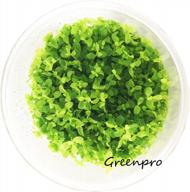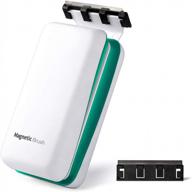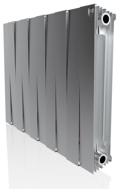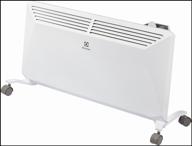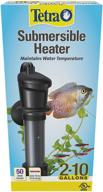Maintaining Optimal Water Temperature for Your Fish
Keeping your aquarium at the right temperature is crucial for the health and wellbeing of your fish. Fish are cold-blooded animals, meaning their body temperature matches that of the water. If the water temperature fluctuates too much or becomes too extreme, it stresses fish out and makes them prone to disease. Follow these tips to maintain the ideal environment.
Types of Heaters and Chillers
The main types of aquarium heaters include:
- Submersible heaters - Sit inside the aquarium immersed in the water
- In-line heaters - Connect to the piping of external filters
- Undergravel heaters - Sit under the substrate
- Substrate heaters - Attach to the bottom of the tank
For cooling, you can use:
- Fan cooling - Use fans to cool open-top tanks
- Chiller units - Refrigerate the water in closed systems
Heater and Chiller Sizing
Choose a heater or chiller with enough power for the size of your tank. A good rule of thumb is to get a heater rated for 25-50 watts per 10 gallons of actual water volume. For example, a 50 gallon aquarium would need 125-250 watts of heating power. Overpowered units can overheat the tank.
Setting the Temperature
Set your heater or chiller to the ideal temperature range for the fish species you keep. Some common tropical freshwater temperature ranges include:
| Fish Types | Temperature Range |
|---|---|
| Tetras, barbs, danios | 72-82°F / 22-28°C |
| Angelfish, discus | 82-86°F / 28-30°C |
| Goldfish | 65-72°F / 18-22°C |
Monitor Temperature Daily
Use an aquarium thermometer to monitor the temperature daily. Fluctions of just a few degrees can stress fish. Place thermometers at both ends of the tank to ensure even distribution.
With good aquarium heaters and chillers sized correctly for your system, plus daily monitoring, you can maintain a healthy and stable temperature for your fish to thrive in.
Types of Aquarium Heaters and Chillers
Maintaining proper water temperature is crucial for a healthy aquarium. There are various types of equipment available to heat and cool aquarium water. Here is an overview of common options.
Similar products
Heater Types
The main types of aquarium heaters include:
- Submersible heaters - Designed to sit inside the aquarium immersed in the water. Models range from small 50-watt units for nano tanks up to 500+ watts for large aquariums.
- In-line heaters - Connect to the piping of external canister filters or a sump system. Water gets heated as it passes through the unit. Good for central heating of multiple tanks.
- Undergravel heaters - Sit underneath the substrate to warm tanks from the bottom up. Help maintain substrate temperature for plants.
- Substrate heaters - Attach to the bottom panel of glass tanks. Efficiently transfer heat directly into the water.
Another interesting products
Chiller Types
Chillers help cool down aquarium water. Types include:
- Fan cooling - Use fans blowing across the water surface of open-top tanks to cool the temperature down through evaporation.
- Peltier chillers - Small units that use Peltier plates to cool small tanks up to 20-30 gallons.
- Compression chillers - Larger units with refrigeration compressors that work like air conditioners to cool tanks from 50-500+ gallons.
Top products in 🐟 Aquarium Heaters & Chillers
What to Consider
Factors to consider when selecting aquarium heating and cooling equipment:
- Your tank size
- Desired temperature range
- Freshwater or saltwater system
- Available space for equipment
- Your budget
With the wide variety of aquarium heaters and chillers available today, you can find the right solutions to maintain perfect water temperature.
Heater and Chiller Sizing Considerations
Choosing the properly sized heater or chiller is important for maintaining stable water temperature in your aquarium. Follow these guidelines for best results.
Heater Sizing
The general rule of thumb for heater wattage is:
- 25-50 watts per 10 gallons of actual water volume for tropical freshwater tanks
- 50-75 watts per 10 gallons for tropical saltwater tanks
For example, for a 50 gallon freshwater aquarium:
- 25 watts x 5 (50 gal / 10 gal) = 125 watts minimum
- 50 watts x 5 (50 gal / 10 gal) = 250 watts maximum
So a 150-200 watt submersible heater would be appropriately sized.
When to Oversize Heaters
It's better to oversize heaters slightly for these situations:
- Older heaters or those with scale buildup
- Tanks in cold basements or garages
- Outdoor ponds in winter
This compensates for factors that reduce heating efficiency over time.
Chiller Sizing
For aquarium chillers, a good guideline is:
- 1/20th to 1/50th of the total water volume for cold water fish
- 1/10th to 1/20th of the total water volume for tropical fish
So for a 100 gallon coldwater goldfish tank, a 2-5 gallon chiller would be appropriately sized. For the same 100 gallon tank with tropical fish, a 10-20 gallon chiller is needed.
When to Oversize Chillers
It helps to oversize chillers in these cases:
- Tanks in hot basements or garages
- Outdoor ponds in summer
- Heavily stocked tanks producing excess heat
With aquarium heating and cooling, bigger is often better to account for all variables. Proper sizing maintains stable temperatures.
Setting and Monitoring Proper Temperature
Maintaining the optimal temperature range is crucial for aquarium health. Follow these steps for setting and monitoring temperature correctly.
Determine Optimal Temperature
The ideal temperature range depends on the fish species. Some common freshwater ranges:
- Tetras, barbs, danios: 72-82°F / 22-28°C
- Goldfish: 65-72°F / 18-22°C
- Discus: 82-88°F / 28-31°C
- African cichlids: 72-82°F / 22-28°C
Know the ideal range for the fish you keep before adjusting heaters or chillers.
Set the Temperature
Adjust heaters and chillers to the middle of your fish's optimal temperature range. For example, if tetras need 72-82°F, set the heater to 77°F. This allows some room in either direction.
Use a Thermometer
Monitor the temperature daily with an aquarium thermometer. Submersible glass thermometers provide the most accuracy. Key tips:
- Place thermometers at opposite ends of the tank to check for uniform heating.
- Calibrate thermometers annually for accuracy.
- Replace fluid thermometers if broken or separated.
Adjust as Needed
If the temperature deviates outside the ideal range, adjust the heater or chiller accordingly. For example, if the tank drops below 72°F for tetras, slowly bump the heater up until it's back between 72-82°F.
Monitor Water Parameters
Improper temperatures affect water parameters like pH and dissolved oxygen. Use test kits to monitor for:
- pH - Ideal range is typically 6.5-8.0.
- Ammonia - Should measure 0 ppm.
- Nitrites - Should measure 0 ppm.
Adjust temperature gradually if necessary to maintain safe parameters.
With close temperature monitoring and incremental adjustments when needed, you can maintain a healthy environment for aquarium fish to thrive.
Placement Tips for Even Heating and Cooling
Proper placement of aquarium heaters, chillers and other equipment is key for maintaining even, stable temperatures throughout the tank. Follow these guidelines.
Heater Placement
Optimal heater locations:
- Near an inlet to circulate warm water faster
- Near the bottom for efficient heat distribution
- Near a filter outflow to quickly disperse heat
Avoid placing heaters:
- Near the water surface where heat is lost
- In a back corner away from flow
- Behind decorations that block water movement
Chiller Placement
For aquarium chillers:
- Place evaporative coolers near the water surface for maximum effectiveness
- Position cooling coils or cold water inlets near the bottom
Prevent chilling just one section by situating units near tank inlets.
Other Equipment Positioning
Also position other equipment to promote temperature stability:
- Direct filter outlets and powerheads to spread warm/cool water
- Angle spray bars for proper distribution
- Route tubing neatly to avoid kinks hindering flow
Regular Maintenance
Maintain equipment for peak performance:
- Clean heaters, chillers and pump impellers regularly
- Trim plants away from intakes and outflows
- Replace old, failing pumps that reduce flow
With strategic setup and regular care, your heaters, chillers and flows with promote a stable, even temperature throughout the aquarium.
Preventing Temperature Fluctuations in Your Aquarium
Keeping your aquarium temperature stable is crucial for fish health. Follow these tips to prevent stressful temperature swings.
Causes of Temperature Fluctuation
Common causes include:
- Heater or chiller failure
- Power outages
- Incorrect wattage for tank size
- Incorrect temperature setting
- Poor circulation
- Rapid water changes
- Seasonal weather changes
Consequences of Unstable Temperatures
Fluctuating temperatures can:
- Stress fish
- Cause disease outbreaks
- Disrupt breeding cycles
- Increase aggression
- Kill fish if extremes are reached
Tips for Stability with Heaters
- Choose adequate wattage for tank size
- Maintain heaters to prevent failure
- Use dual heaters for redundancy
- Place heaters properly in tank
- Set temperature conservatively
Tips for Stability with Chillers
- Select appropriate chilling capacity
- Clean condenser coils regularly
- Insulate tanks in hot rooms
- Use cooling fans as needed
Use Controller Systems
Temperature controller systems measure and automatically adjust heaters and chillers to maintain stable tank temperatures.
Preventing temperature fluctuations keeps aquarium inhabitants healthy and thriving in a stable environment.
Benefits of Amazon Prime for Buying Aquarium Heaters & Chillers
When shopping for aquarium heating and cooling equipment on Amazon, a Prime membership provides several useful benefits:
Free Two-Day Shipping
Amazon Prime offers free two-day shipping on eligible items. This allows you to quickly get new heaters and chillers delivered right to your door at no extra cost. No need to pay for expedited shipping.
Free One-Day Delivery
For an additional fee, Prime members can upgrade to one-day delivery on over 3 million items. This is useful if you experience an equipment failure and need a replacement ASAP before temperatures fluctuate.
Free Release-Date Delivery
When you preorder eligible items, Prime members get free release-date delivery so the product arrives on launch day. Great for getting the latest aquarium gear right away.
Try Before You Buy
The Prime Wardrobe program lets you try products like chillers for 7 days before purchasing. Return what you don't want at no extra cost. Helps you ensure proper fit and function.
Access to Deals
Prime Early Access gives members 30-minute exclusive early access to Lightning Deals on gear. You can score marked-down heaters, chillers and accessories before others.
With these Prime perks, you can conveniently obtain aquarium heating and cooling equipment hassle-free.
"What Are The Best Aquarium Heaters For My Fish?"
Based on the search results, here are some of the best aquarium heaters for your fish:
- Fluval E200 - the most accurate and safe aquarium heater that is easy to install, set, and calibrate.
- Orlushy Submersible Aquarium Heater - the best overall aquarium heater for its reliability, easy-to-set controls, and affordability.
- HiTauing Aquarium Heater - a submersible fish tank heater with over-temperature protection and automatic power-off when leaving water for saltwater and freshwater.
- Cobalt Neo-Therm - a durable and high-quality aquarium heater that is half the price of other top choices.
- Eheim Jager Aquarium Thermostat Heater - a powerful 300W submersible heater that is recommended for a 159-gallon tank and can change temperature from 18° to 34° C (65° to 93° F).
- Aqueon Pro Adjustable Heater - a popular submersible heater with a wide range of models ranging from 50W to 250W, which can fit varying needs of tank size.
It is important to choose the right size of aquarium heater based on the manufacturer's recommended capacity or the rule of thumb of 1W for 1 liter or 4W per gallon of water. Also, consider using more than one heater in the tank for aquariums 55 gallons (208 liters) and up and/or if the room is 10°F colder than your desired tank temperature. Finally, make sure to install the heater horizontally and not vertically and at the corners/sides to ensure that warm water flows to the whole tank.
What Are The Pros And Cons Of Using A Submersible Vs. A Hanging Aquarium Heater??
Here are the pros and cons of using a submersible vs. a hanging aquarium heater:
Submersible Aquarium Heater:
Pros:
Cons:
Hanging Aquarium Heater:
Pros:
Cons:
In-Line Aquarium Heater:
Pros:
Cons:
Overall, the choice between submersible, hanging, or in-line aquarium heaters depends on the size of your tank, your budget, and your personal preference. It is important to choose the right size of aquarium heater based on the manufacturer's recommended capacity or the rule of thumb of 1W for 1 liter or 4W per gallon of water. Also, consider using more than one heater in the tank for aquariums 55 gallons (208 liters) and up and/or if the room is 10°F colder than your desired tank temperature. Finally, make sure to install the heater properly and at the corners/sides to ensure that warm water flows to the whole tank.
What Are The Differences In Installation Between Submersible And Hanging Aquarium Heaters??
Here are the differences in installation between submersible and hanging aquarium heaters:
Submersible Aquarium Heater:
Hanging Aquarium Heater:
When choosing between submersible and hanging aquarium heaters, it is important to consider the size of your tank, your budget, and your personal preference. It is also important to choose the right size of aquarium heater based on the manufacturer's recommended capacity or the rule of thumb of 1W for 1 liter or 4W per gallon of water. Finally, make sure to install the heater properly and at the corners/sides to ensure that warm water flows to the whole tank.





